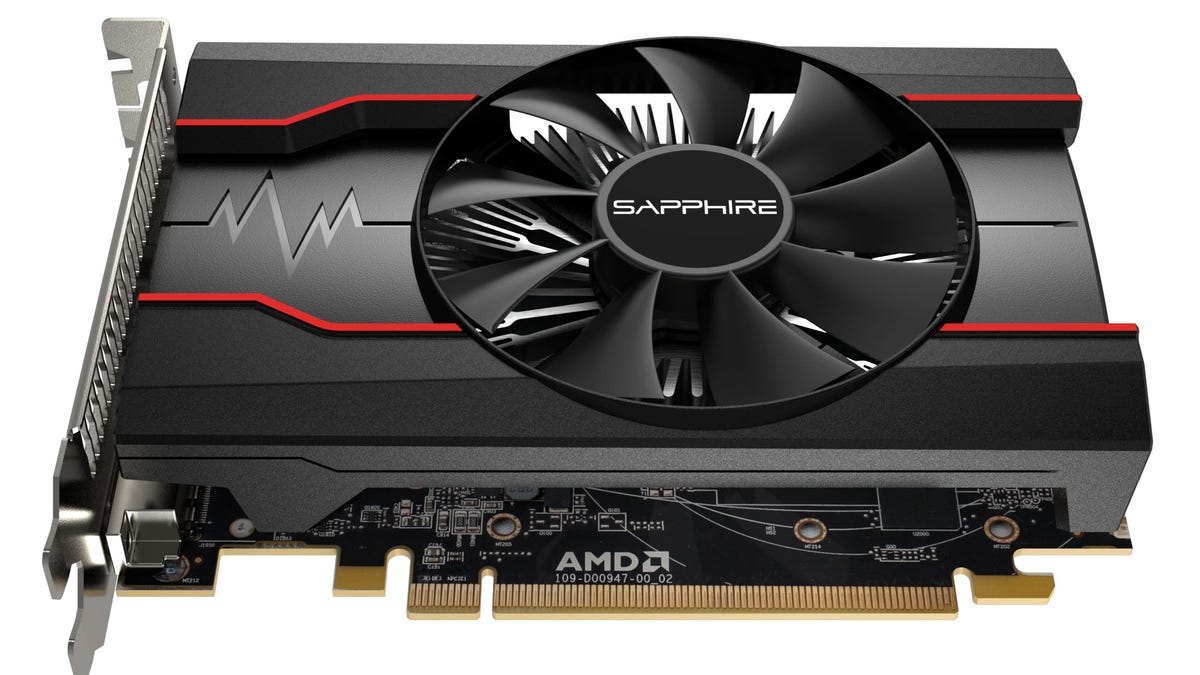AMD really wants you to upgrade your graphics card in 2017
The Radeon RX 500 series of graphics processors includes a new, cheap RX 550 if you want to take a baby step up from your two-year-old card for a pittance.

The RX 550 is intended to be a slightly-better-than-basic graphics upgrade for people who have old equipment.
If you can't beat 'em, offer a really cheap alternative. That seems to be one of the themes of AMD's Radeon RX 500 series of GPUs, the successor to the not-very-old RX 400 series.
The most notable news is the way-cheap entry-level RX 550, which will start at $80 when it goes on sale in a couple of days. It's a step up from integrated graphics and it will make a cost-effective buddy for ultracheap FreeSync-compatible monitors.
All its strengths are about its low-profile, low-power design, and AMD extols its performance as 1.7 times better than its spiritual predecessor, the three-and-a-half-year-old R7 250, and about four times better than the last-generation Intel HD 530 integrated graphics processor.
I think if you're going to take the opportunity to update your graphics subsystem, however, you should spend a little more to sufficiently futureproof it. Or wait until you really feel the need. It's hard to make any judgements, though, since AMD hasn't given us much in the way of specs for the RX 550: 8 compute units, 1,183MHz boost clock, 2GB GDDR5 and HDMI 2.0b.
The rest of the GPU models -- the RX 580, RX 570 and RX 560 -- still don't seem to pose any challenge to Nvidia at the mid-to-high end of the range. The RX 580 at best competes with the GTX 1060. Instead they still fit into more of a "reasonable performance for a reasonable price" mold, offering less expensive alternatives to Nvidia's competing models. The slight increase in clock speed (up to six percent for the boost clock and about 15 percent on average for the base clock) and the slight tweaks to the Polaris architecture that make it "second generation" don't inspire thrills, and mostly contribute to decreased power draw.
For its 2017 GPUs, AMD is explicitly targeting the large market of people who are still using a cheap two-year-old GPU or integrated graphics. But the allure of the RX 500 series is no shinier than the RX400's, so I'm not sure why AMD expects people to suddenly see the light -- unless it's counting on its 2017 FOMO marketing tactics. You'll miss out on VR!
With the exception of clock speed, the hardware specs seem to be the same. Last year's RX 400 series also offers identical capabilities. Like the new generation it supports Radeon Chill, which optimizes power draw and speeds up response time by dynamically adjusting the frame rendering (but that only works with a limited number of games, all DX9 or DX11). It also supports Radeon ReLive, the streaming and sharing platform that came out last December.
On the other hand, while the GPUs don't really generate excitement, they do promise to be slightly faster and have better multimonitor support than the previous series. The increase in clock speed generates some concomitant increases in throughput, at least. So if you're in the market for a new card, there's that.
The new products are available this week except for the RX 560, which will be available in early May. The RX 580 costs $200 for 4GB or $230 for 8GB. Initial cards range from $200 to $275. The RX 570 costs $170 for 4GB, with the first cards running between $170 and $200. The RX 560 goes for $100.
I don't have overseas prices for anything yet, but the chip costs convert to approximately £160 or AU$260 for the RX 580 4GB. £180 or AU$300 for the RX 580 8GB. £135 or AU$220 for the RX 570. £80 or AU$130 for the RX 560 and £65 or AU$105 for the RX 550.

